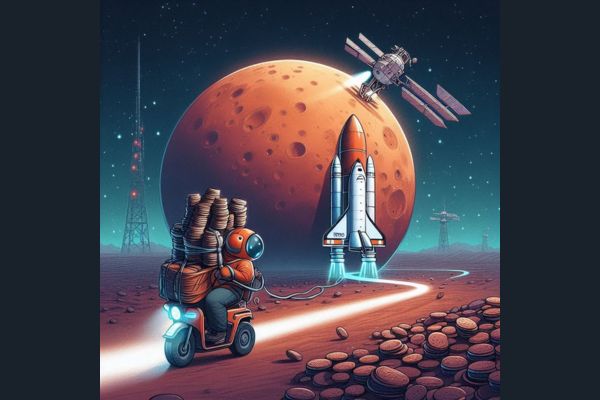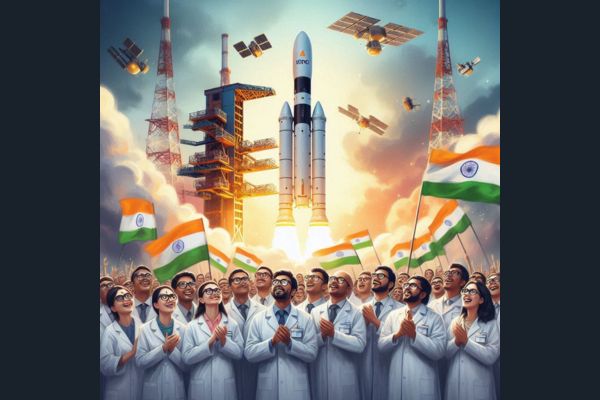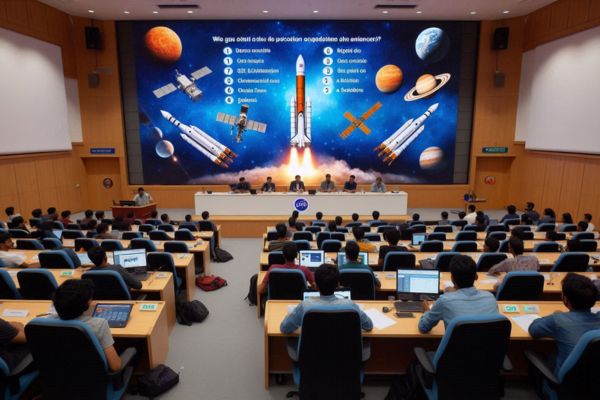India’s outer space mission is a source of pride for Indians. The Indian Space Research Organisation (ISRO)’s journey from the zero level to the interplanetary mission is truly angelic. The space research organization has gradually become an icon of innovation, determination, ambition, and motivation for achieving the impossible.
1. The Bicycle Launch
In 1963, ISRO Nike-Apache rocket parts were transported by bicycles and bullocks. The nose cone and payload were transported on a bicycle to the launch site, Thumba in Kerala. It is significant to note that these early space pioneers used a zero-emission method of transportation.
2. Name of Agency
ISRO wasn’t always called the Indian Space Research Organisation. Its initial name was the Indian National Committee for Space Research (INCOSPAR). It changed into “ISRO” in 1972.
3. Satellite for Fishermen
ISRO launched a satellite named ‘Distress Alert Transmitter’ (DAT) in 2010, specifically to help Indian fishermen find fish-rich zones and send emergency signals in the ocean. This shows their commitment to using space technology for practical and everyday benefits.
4. Staking up Mars on a Shoestring Budget

Indian scientists saving money on the Mangalyaan mission. Source- Microsoft Designer
ISRO’s Mangalyaan Mars Orbiter Mission was cheaper than the Hollywood movie ‘Gravity’ which cost US$100 million to make. ISRO sent a spacecraft to Mars for a project cost of US$ 74 million NASA on the other hand has spent more than 21 billion dollars on the Mars 2020 mission. This mission was to investigate an astrobiologically relevant ancient environment on Mars.
5. Recycling Rockets
Something that might delight any environmental conservationist is that ISRO has a habit of reusing the rocket body parts used in previous missions to save costs and avoid wastage. The winged body and all flight systems used in the RLV-LEX-01 mission were reused in the RLV-LEX-02 mission. These missions were done to test the approach and landing conditions for a vehicle returning from space at high speeds.
6. First Satellite: An Oversized Science Project
Aryabhata, the first Indian Satellite launched in 1975, was named after a well-known mathematician of ancient India. But the satellite resembled a giant polyhedron which is tough to construct as there are many sides of this geometry, and each had to be joined at a fixed angle. To achieve this today, a space agency might use highly accurate robots and achieve perfection. But back in 1975, ISRO did this by hand and human skill.
7. IPL – ISRO Premier League
In a cricket-crazy nation like India, even ISRO scientists enjoy the IPL. The difference is that this IPL stands for ISRO Premier League, played with teams where ISRO scientists are players.
8. The Cosmic Crowd

ISRO scientist being happy after making a world record. Source- Microsoft Designer
In 2017, ISRO sent 104 Sun-synchronous orbits satellites into space in one instance through its PSLV rocket. Out of 104 satellites, 96 were from the United States, and 1 each from Israel, Kazakhstan, UAE, the Netherlands, and Switzerland, others were Indian satellites.
9. Rocket Launches from a Church
The Thumba Equatorial Rocket Launching Station, where ISRO started its operations, was the site of a church. Rev. Dr. Peter Bernard Pereira, who was Bishop in 1963 recognized the potential of this mission and eventually agreed to this collaboration. Later on, the church was converted into a space museum.
10. The Space Station Dream
Currently, ISRO is aiming to develop its space station and make it operable by 2030. India will become only the fourth country to have a space station, joining the USA, Russia, and China.
11. The YouTube sensation
ISRO live telecasted the landing of Chandrayaan-3 on its YouTube channel. This live telecast became the most-watched event on YouTube with 8M+ live views and broke all the records. The previous best was the streaming of the FIFA World Cup 2022 QF match between Brazil and Croatia. It gained 6.14 million viewers.
12. The “Astronomical Quiz” Tradition:

People attending space quiz organized by ISRO. Source- Microsoft Designer
ISRO conducts a yearly “Astronomical Quiz” open to the public. This initiative not only tests participants’ knowledge but also encourages public interest in astronomy and space exploration. The quiz covers a wide range of topics, making it a fun and educational event for space enthusiasts.
13. The Space Race Sneaker
India’s rover, Pragyan, which is part of the Chandrayaan-3 mission lunar exploration, had to explore the south pole of the moon. Due to some calculation and assumption mistakes, it made a hard landing on the moon’s surface, but the Pragyan rover nevertheless explored the moon’s surface. India became the first country to explore the moon’s south pole region.
14. Homegrown Tech: The Great Balloon Experiment
ISRO scientists launched a balloon experiment in 2009, to find new colonies of species that are resistant to ultraviolet radiation. In this experiment, they discovered three new bacterial species named, Janibacter hoylei in honor of the noted British astrophysicist Fred Hoyle. The second new species was named Bacillus Isronensis, in recognition of its contribution to the experiment, and the third new species was Bacillus Aryabhata, after the fabled Indian astronomer.
15. The Smiling Rocket
In the graphical plot of the PSLV rocket, one can see the curves of a. smiley face. ISRO engineers fondly call this path “ARO”, short for A Rocket’s Smile.
16. Space Food Delite

AI-generated image of astronauts having traditional Indian food in space. Source- Microsoft Designer
ISRO has developed specific foods like idlis, sambars, and upma that can be safely consumed in space. This is how ISRO will take care of its future astronauts by giving them traditional Indian meals in space.
17. Work distribution
Many of us think that all the ISRO’s research work is done only in a single place. But this is a myth, there are many centers and each center has its specifications. Like Vikram Sarabhai Space Centre (VSSC), Ahmedabad mainly focuses on the payload, and VSSC, Trivandrum focuses on the propulsion system.
18. Next Space Taxi Company
Polar Satellite Launch Vehicle (PSLV) earned its title ‘the workhorse of ISRO’ by consistently delivering various satellites into low earth orbits. Till now PSLV has launched more than 48 Indian and 209 other countries satellites.
19. Cosmic Coconut Breaking Ceremony
Before launching a new satellite, SARAL, ISRO scientists perform a traditional coconut-breaking ceremony for good luck. According to Indian customs, breaking a coconut before embarking on a new journey is considered auspicious. The tradition is followed for high-tech space missions too.
20. The Cosmic Carpenter

Making of satellite under a small shed. Source- Microsoft Designer
The Aryabhata, the first satellite that India sent into orbit, was designed in a small shed. It was built by ISRO, and launched by the Soviet Union as a part of the Soviet Interkosmos program. It was built to conduct experiments in X-ray astronomy, aeronomics, and solar physics. It was launched by India on 19 April 1975 from Kapustin Yar, using a Kosmos-3M launch vehicle.
If you enjoyed reading this article, you will love our newsletter. Sign up for our free newsletter.
You also buy space merch at our Shop.


